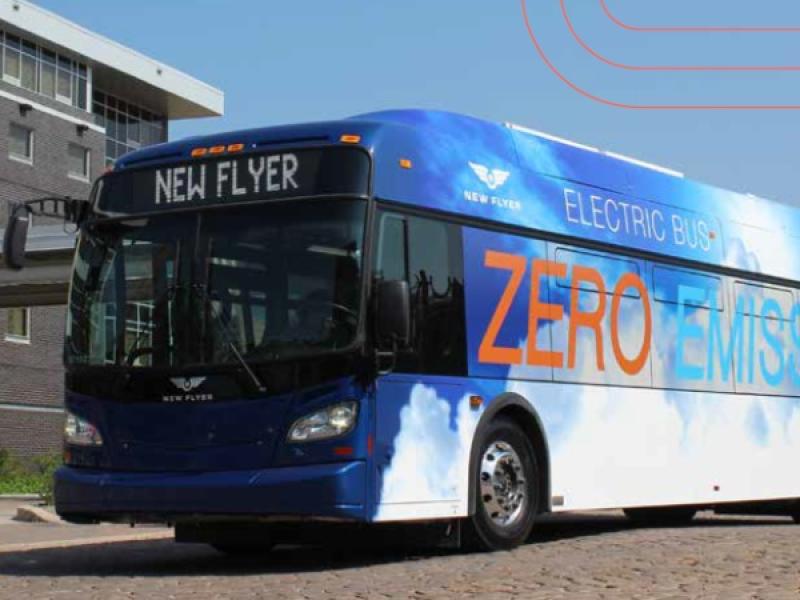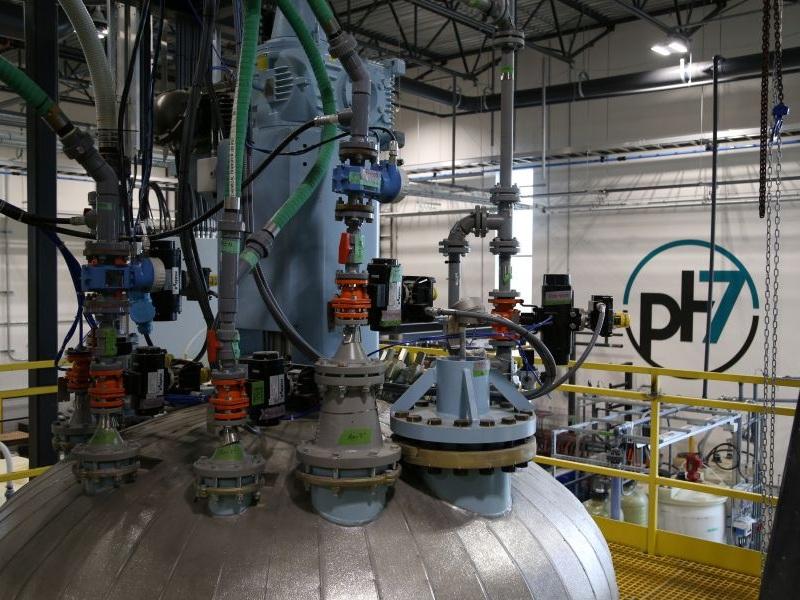
The number of zero-emission buses driven by Canadian transit authorities reached a new high in 2025, but procurement dipped to a two-year low, according to an analysis by the Canadian Urban Transit Research & Innovation Consortium (CUTRIC).
The Toronto-based non-profit published its sixth report examining the state of zero-emissions bus (ZEB) adoption by over 60 transit agencies across the country. CUTRIC found 393 ZEBs in service in May, a 54 per cent leap from 255 in July 2024. The ZEBs overwhelmingly consisted of battery-electric versions, plus a few hydrogen fuel-cell variants.
However, ZEBs in the transition stages — pronouncement, feasibility, funding, procurement, commissioning — tumbled in the same period. Procurement, for example, fell to 492 ZEBs, shrinking by 30 per cent compared to July 2024 and 13 per cent from 2023.
The number of ZEBs in various transition stages as of May was 4,031, the lowest since 1,214 in 2022. Compared to July 2024, it fell by 26 per cent.
“We don’t really see this as too surprising. There has been some uncertainty in the industry,” Holly Hixson, the project manager of sustainable transit initiatives at CUTRIC, said in an interview with Sustainable Biz Canada. “We don’t think the transit agencies or city governments are turning away from their sustainability goals, but we do think this reflects a slowdown.”
The Canadian government has set a target for transit authorities to deploy 5,000 ZEBs across the country by 2026.
How the ZEB transition breaks down provincially
Quebec and Ontario are Canada’s leaders in the ZEB transition, Hixson said. Quebec’s transit agencies topped the chart with battery-electric buses in transition at 1,544, followed by 1,386 in Ontario. British Columbia, Alberta and Nova Scotia were next at 542, 326 and 101, respectively.
CUTRIC says Quebec and Ontario are charging ahead of their provincial peers because of their higher population density, larger urban areas with high transit ridership rates, a higher concentration of public transit systems, and greater access to government and municipal support.
While not in the top two, British Columbia is forging ahead with its transition to ZEBs, Hixson said. The West Coast province saw its transit authorities increase the number of ZEBs in transition from 300 in 2023 to 542 in July.
Some transit authorities may be slow to electrify their buses because it does not make sense operationally and financially, Hixson explained. Transitioning to ZEBs demands large investments in chargers, storage space and retraining. If the carbon emissions savings are not substantial, the investments may not line up, she said.
Charging infrastructure has kept up with the ZEBs on the road, Hixson said, as the transit agencies are prepared to accommodate new buses they ordered. But larger cities will find “a need for a strong effort toward getting all of these infrastructure projects underway as soon as possible in order to support this large, wide-scale transition."
CUTRIC observed a “growing preference” among transit authorities for overhead equipment that recharges buses from the top rather than the sides, known as pantograph chargers. There were 355 pantograph chargers in the planning stage as of July, compared to 57 plug-in chargers.
Compared to plug-in chargers, pantograph chargers top up batteries faster and are more highly automated. The overhead chargers are also more compact, CUTRIC said.
Keeping funding topped up crucial for ZEBs
The drop in demand for ZEBs did not come as a surprise to Hixson. The electric transportation industry is contending with tariffs, inflation and supply chain disruptions, plus long-standing barriers like higher infrastructure and acquisition costs and grid limits.
Another major contributor CUTRIC suspects is a scale-back of the Zero Emission Transit Fund (ZETF), the Canadian government’s main funding mechanism for transit agencies. It is expected to be replaced by the Canada Public Transit Fund (CPTF), but the switch has not yet fully taken place, Hixson said.
Such government support is vital to maintaining the momentum for ZEBs. A standard 40-foot battery-electric bus costs approximately $1.2 to $1.5 million, CUTRIC said, more than double the price of a diesel-powered equivalent.
CUTRIC recommends the federal government raise its funding for ZEBs to accelerate the pace of the transition. Hixson said CUTRIC would like to see the CPTF go from committing $3 billion per year to a figure closer to $5 billion.
If additional federal aid is not possible, she hopes provincial governments will step up to cover the funding gap. The Canadian government could offer the funds through alternative financing models, such as the Canada Infrastructure Bank's program.
CUTRIC predicts there will be 6,000 ZEBs in all stages of transition and approximately 400 ZEBs will be in service by 2026.
For its next research, CUTRIC will be publishing an update to its ZEB overview and measuring the manufacturing footprint of the transit industry in Canada, Hixson said.










